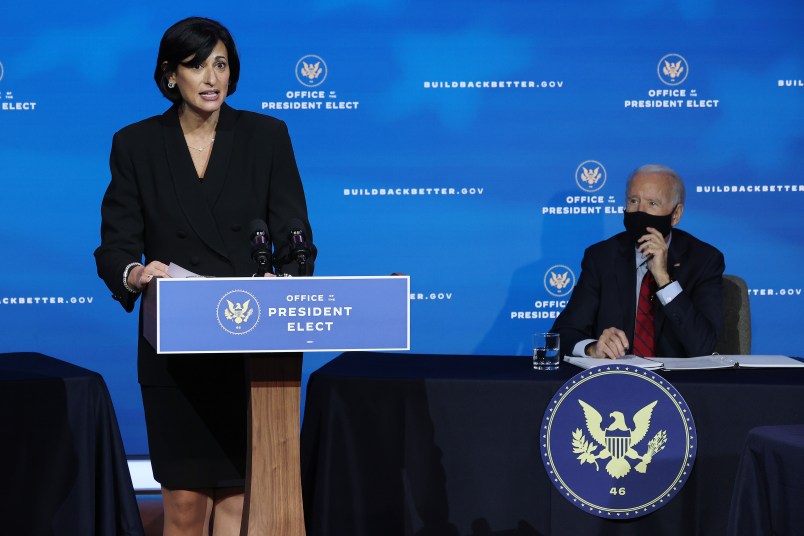Amid mounting criticism that guidance around what the COVID-19 vaccines allow people to do once inoculated was unclear, the Centers for Disease Control has released new recommendations for what freedoms the shots should allow.
The guidelines now recommend that the fully vaccinated can spend time with other vaccinated people indoors without social distancing and without wearing a mask. They can also forego a quarantine and testing should they be exposed to someone positive for COVID-19.
CDC Director Rochelle Walensky on Monday stressed that the agency has issued “initial guidance” that is subject to change as it gains more knowledge of the disease.
“The science of COVID-19 is complex and our understanding of the virus continues to rapidly evolve,” Walensky said. “The recommendations issued today are just a first step.”
The guidelines also stipulate that the fully vaccinated can visit with non-vaccinated people without adhering to mask-wearing or social distancing so long as the unvaccinated are at low risk of severe COVID-19 and are socially distancing in other contexts.
According to Walensky, the CDC is not adjusting current guidance on travel. Walensky urged all Americans, regardless of vaccination status, to continue avoiding medium and large gatherings as well as non-essential travel.
Critics of the CDC’s approach so far have argued that the agency had failed to convey to Americans who are less likely to suffer from severe disease the benefits of getting inoculated.
The question is becoming more salient as the majority of Americans who are 65 and older have been vaccinated. The remaining cohorts of the population left to receive the shot are also those who have been driving transmission through much of the pandemic: the young and those without pre-existing conditions.
From a public health standpoint, it presents a dilemma: those most likely to transmit the virus need an incentive to receive the vaccine in order to protect the most vulnerable. But at the same time, it remains unclear how effective the vaccines are at stopping transmission. Some early studies have suggested that the shots do limit transmission rates, but federal scientists are wary of issuing guidance that could get ahead of the medical literature.
The new guidance however, also comes as states across the country reopen in response to the rapid pace of the vaccine rollout. Texas and Mississippi sparked rage in the public health world by rescinding any and all COVID-19 requirements, a move President Biden described as “neanderthal thinking.”
Other states, from New York to North Carolina to California, have begun to allow bars, movie theaters, and theme parks to reopen.







As none of the vaccines are 100% effective, doesn’t it make sense to still wear masks even if you are fully vaccinated? At least til we get closer to herd immunity?
I also wonder how many anti-vaxxers are going to lie about being vaccinated.
Somewhat off topic:
https://www.washingtonpost.com/nation/2021/03/07/idaho-mask-burning/
They look like some creepy families out of the Shirley Jackson novel the Lottery or something by Steven King.
I did Nazi that coming. What next, book-burning?
The “I WILL NOT SELF-SUFFOCATE” sign does not alleviate any of the creepiness.
This part is not helpful:
That’s going to be seen as a license to forego wearing a mask under just about any circumstance short of visiting an unvaccinated elderly relative. Among other things, it’s going to make it very hard on restaurants who try to continue enforcing masks when not actually eating or drinking. And of course it gives an excuse for governors to further reduce or abandon any restrictions on masks.
What they should have done (IMO) is tie that recommendation to the percentage of confirmed cases to population in each different area.